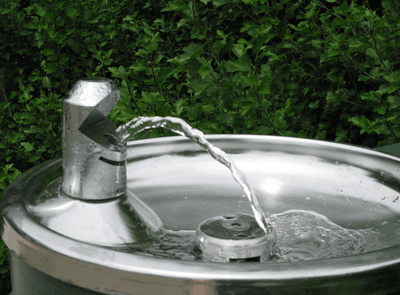
What Height Should Accessible Drinking Fountains Be?
Key Takeaways
- ADA guidelines provide clear rules for the height of accessible drinking fountains to ensure they can be used by everyone.
- Different factors like who will use the fountain and where it's located can affect the best height for installation.
- Following best practices, such as choosing the right spot and maintaining the fountain, can make sure it stays accessible for a long time.
Understanding ADA Guidelines for Drinking Fountain Heights
Overview of ADA Standards
The Americans with Disabilities Act (ADA) sets rules to make sure public places are accessible to everyone. These rules include how high drinking fountains should be. The water stream must be at least 4 inches (10.16 cm) high to make it easy for people to drink without touching the spout. This helps keep things clean and safe.
Specific Height Requirements
The ADA has specific height rules for drinking fountains. For adults, the spout should be no higher than 36 inches from the ground. There are exceptions for fountains mainly used by children, where the spout can be between 30 inches (760 mm) and 43 inches (1090 mm) high. These rules make sure that everyone, no matter their height or ability, can use the fountains.
Importance of Compliance
Following ADA guidelines is not just about following the law. It's about making sure everyone can use public spaces easily. When you follow these rules, you help create a more inclusive environment. This is important for people with disabilities and for the community as a whole.
Related: The ADA- The History of the Americans with Disabilities Act
Factors Influencing Drinking Fountain Height

User Demographics
When determining the ideal height for drinking fountains, understanding the user demographics is key. The people using the fountain can vary greatly depending on the location, and their unique needs must be taken into account. In places like schools, where the primary users are children, drinking fountains must be positioned lower so that they are easily accessible to young students. However, in public areas such as parks or office buildings, the demographic can range from young children to adults of varying heights. In these cases, it's important to strike a balance by either installing multiple fountains at different heights or choosing a model that can accommodate a broader range of users. This approach ensures that both children and adults, as well as people of different heights and abilities, can comfortably access the water.
Types of Disabilities
In addition to the general public, it's essential to consider the needs of people with disabilities. Different types of disabilities call for specific adjustments to fountain height. For instance, individuals who use wheelchairs will require a drinking fountain installed at a lower height than those who can stand. The Americans with Disabilities Act (ADA) provides guidelines to ensure that public drinking fountains are accessible to everyone, including people with mobility impairments. These regulations recommend that fountains be installed no higher than 34 inches from the ground to accommodate wheelchair users. Ensuring that the design is inclusive allows for greater accessibility and equal access to hydration for all.
Environmental Considerations
Environmental considerations also play a role in the installation of drinking fountains. Indoor and outdoor settings can present different challenges. For outdoor fountains, factors like weather, ground stability, and potential obstacles must be taken into account. For example, an outdoor fountain in a park may need to be placed at a height that prevents weather-related issues such as freezing, while still ensuring it’s accessible to all users. On uneven ground or in areas with potential obstacles, the height and positioning of the fountain must be carefully planned to avoid obstructions and ensure smooth access for everyone.
Related: The Ultimate Guide to Building an Accessible Bathroom
Best Practices for Installing Accessible Drinking Fountains
Choosing the Right Location
When installing accessible drinking fountains, selecting the right spot is crucial. You should place them in areas that are easy to find and reach. Think about high-traffic spots like hallways or near restrooms. This ensures everyone can use them without much trouble.
Ensuring Proper Maintenance
Keeping the drinking fountains in good shape is just as important as installing them. Regular checks and cleaning help keep them working well. If a fountain breaks, fix it quickly to avoid any inconvenience. This way, you make sure that everyone has access to clean water.
Incorporating Universal Design Principles
Using universal design principles means making the fountains usable for everyone, no matter their abilities. This includes considering the height and ease of use. By doing this, you create a more inclusive environment for all users.
When installing accessible drinking fountains, it's important to follow best practices to ensure everyone can use them safely and comfortably.
From choosing the right height to ensuring proper water flow, every detail matters. For more tips and expert advice on making spaces accessible, visit our website.
Conclusion

The height of accessible drinking fountains is crucial for ensuring that everyone, including people with disabilities, can stay hydrated comfortably. By following the recommended guidelines, we can make public spaces more inclusive and welcoming. Organizations like Rosarium Health play a vital role in connecting individuals to healthcare providers and licensed contractors who can make necessary home modifications. This ensures that homes are safe and accessible for everyone. Let's work together to create environments where everyone feels included and valued.
Ready to Get Started?
Contact us today to learn more about our home modification services and how we can help make homes safer and more accessible.
Contact Us Today